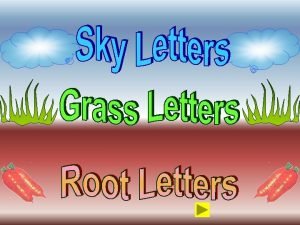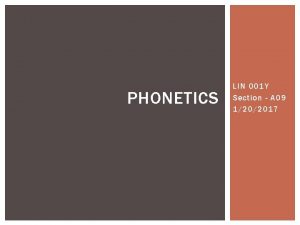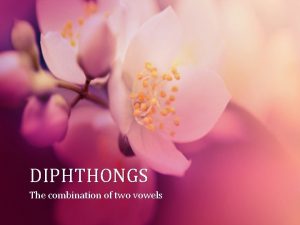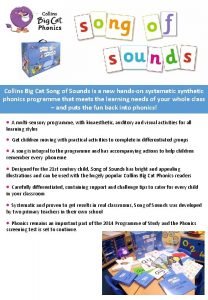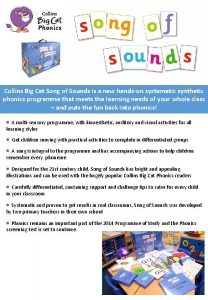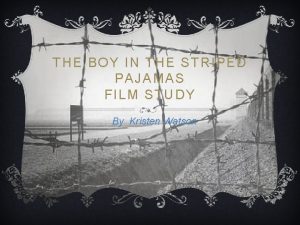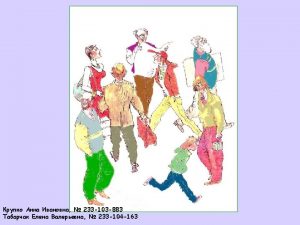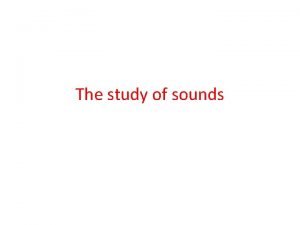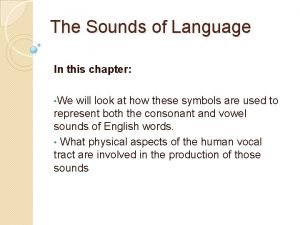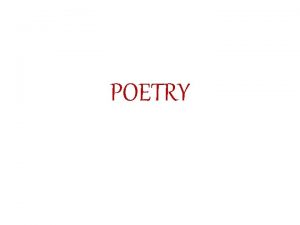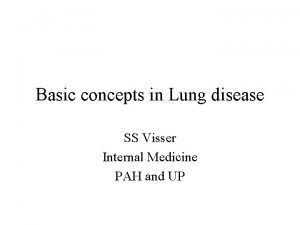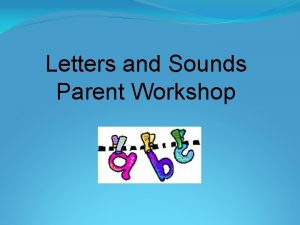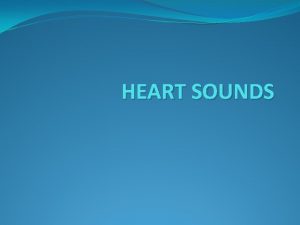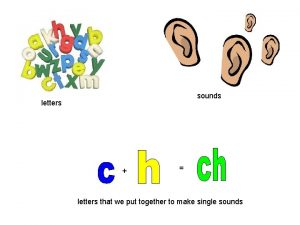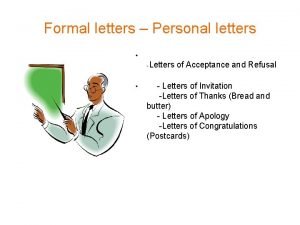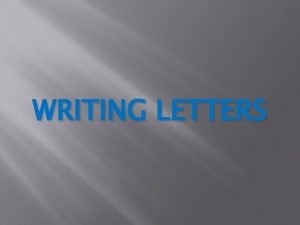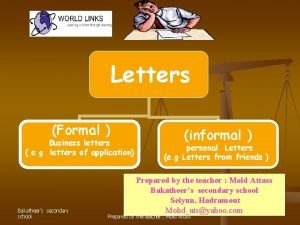Letters and Sounds Letters and sounds is a













- Slides: 13

Letters and Sounds Letters and sounds is a six phase teaching programme.

Phase Two Up to 6 weeks By the end of phase two children should be able to read some vc and cvc words. Children will also learn to read the words ‘the, to, go, I and no. ’ Five sets of letters are introduced – one set per week. Set 1: s, a, t, p Set 2: i, n, m, d Set 3: g, o, c, k Set 4: ck, e, u, r Set 5: h, b, f, ff, l, ll, ss

Children are taught reading and spelling throughout the week. Each session follows the same format. The activities used to teach vary and can be adapted. They are multisensory and appeal to different learning styles.

Revisit and Review Teach Practise Apply

Phase Three 12 weeks Children are taught another 25 phonemes/graphemes. Children continue to blend and segment CVC words for reading and spelling. Children will then use this knowledge to blend and segment two syllable words. Set 6: j, v, w, x Set 7: y, z, zz, qu Consonant digraphs: ch, sh, th, ng Vowel digraphs: ai, ee, igh, oa, oo, ar, or, ur, ow, oi, ear, air, ure, er

Phase Four 4 – 6 weeks By Phase 4 children are able to represent each of 42 phonemes by a grapheme. Children will be able to blend and segment CVC words for reading and spelling. Phase 4 is consolidation of children’s knowledge. Children are encouraged to practice blending for reading and segmenting for spelling of adjacent consonants.

Phase Five Throughout year one Children will be taught new graphemes and alternative pronunciations for these graphemes and graphemes they already know. They will begin to learn to choose the appropriate grapheme when spelling. The children will be automatically decoding a large number of words for reading by this point.

The Phonics Check In June all Year One children will be expected to undertake a phonics check. The aim is to check that a child is making progress in phonics. If a child has not reached the expected standard we will ensure that additional support is given to help your child progress in year 2.

Phase Six Throughout year 2 Children working at phase six can read hundreds of words automatically. Children can decode words quickly and silently. Children’s spelling will be phonemically accurate. During this phase children become fluent readers and increasingly accurate spellers.

Blending Use sound buttons to blend together sounds to read the word. cat

Segmenting Chop up words using robot arms for writing. Follow the process: Say it Chop it Write it c a t

Useful websites • • Youtube – Jolly phonics videos for practising sounds www. letters-and-sounds. com – Resources www. phonicsplay. co. uk – Games www. gov. uk/government/publications/letters-and-sounds - Letters and sounds scheme that school follows

Any questions?
 Sky and root letters
Sky and root letters Oral sounds and nasal sounds
Oral sounds and nasal sounds Combination of two vowel sounds
Combination of two vowel sounds Letter and words difference
Letter and words difference Letters and sounds reception
Letters and sounds reception Big cat song
Big cat song Collins big cat phonics for letters and sounds download
Collins big cat phonics for letters and sounds download The boy in the striped pajamas setting
The boy in the striped pajamas setting Now listen and repeat
Now listen and repeat Voiced and voiceless sounds
Voiced and voiceless sounds Voiced
Voiced Enjambment
Enjambment What are audible and inaudible sounds
What are audible and inaudible sounds Vessek
Vessek
